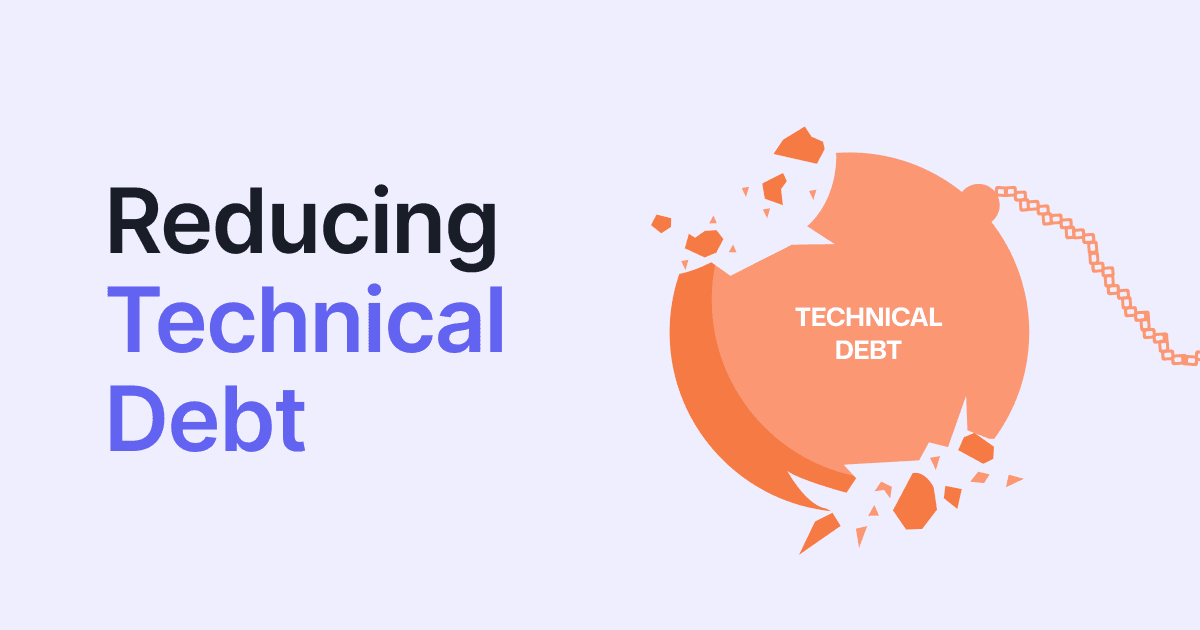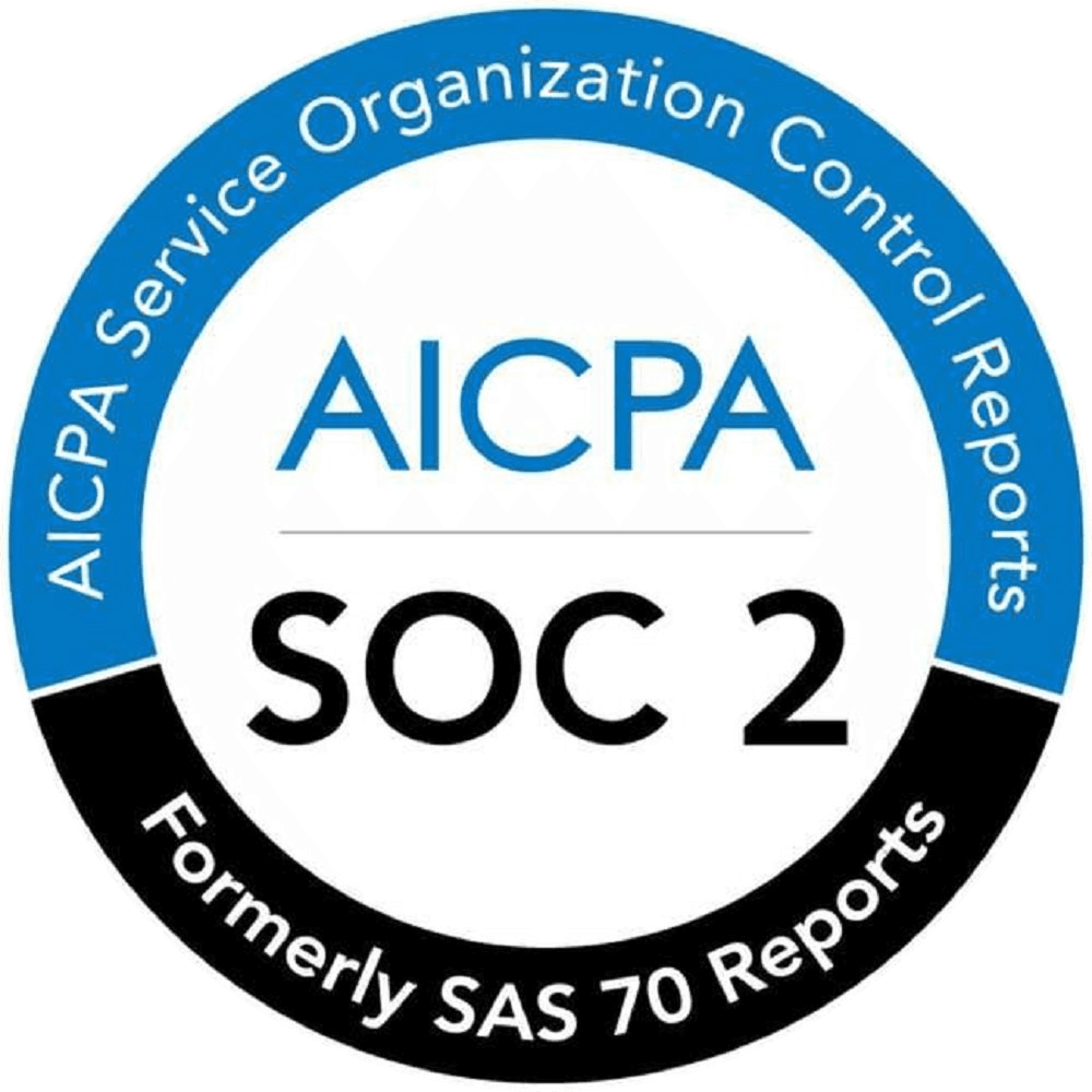Code Quality
Jul 24, 2025
What Is Code Governance? Benefits, Tools & Best Practices

Amartya Jha
Founder & CEO, CodeAnt AI
Why Code Governance Matters More Than Ever
It started with a single commit.
A junior engineer pushed what looked like a harmless change - a new helper function and some debugging lines. But buried in that commit was a hardcoded AWS token. No one caught it. There was no automated secret scanner in place, and code reviews had become a formality. Within hours, bots had picked up the token, and the team’s cloud bill exploded.
It wasn’t sabotage. It wasn’t even bad intent. It was just one mistake that no one saw coming - because no one was looking for it in the right way.
This kind of story is becoming more common. Teams are growing. Repositories are multiplying. Features are shipping faster than ever. But with all that speed comes risk - inconsistent code, missing tests, insecure practices, unclear ownership. And when things do go wrong, everyone scrambles to figure out why no one stopped it earlier.
That’s where code governance comes in.
And let’s be clear: governance is not about micromanagement. It’s not about slowing down your team with red tape. In fact, it’s the opposite. Code governance is what gives fast-moving teams the confidence to move even faster - because they know that guardrails are in place. It's about alignment, consistency, and control at scale. Without it, speed turns into chaos.
What Is Code Governance?

At its core, code governance is a structured approach to managing how code gets written, reviewed, approved, and maintained. It’s the combination of policies, tools, and workflows that make sure your codebase stays high-quality, secure, consistent, and compliant - even as your team grows or your product becomes more complex.
Think of code governance like traffic rules for your engineering team. It’s not about slowing anyone down - it’s about making sure everyone can move quickly without crashing into each other. Just like seatbelts and traffic lights, it gives you the confidence to pick up speed, because you know the system is designed to catch problems early.
It goes far beyond linting or code review. Good governance includes everything from who owns what parts of the code - to how many reviewers are required for a pull request, to whether tests must pass before merging. It involves automation - like CI checks and secret scanners - and it leaves an audit trail of how decisions get made.
In other words, code governance is what turns good intentions into reliable outcomes.
Why Code Governance Matters (For Teams of All Sizes)

It’s easy to assume code governance is something only big companies need. But the truth is, any team building software – from three people in a garage to thousands across time zones – benefits from having the right checks in place.
Here’s why it matters.
Business Alignment
Code is not just an engineering output. It’s tied to everything a company cares about – delivery timelines, customer experience, and legal or compliance requirements.
Code governance makes sure what developers write aligns with what the business needs, whether that’s shipping fast or staying secure.
Security and Risk Reduction
Hardcoded secrets, outdated libraries, accidental misconfigurations – small oversights like these can open the door to major vulnerabilities.
A solid governance framework helps catch issues early, often before they even make it into a pull request.
Better Developer Experience
When governance is done right, it actually helps developers.
It cuts down on review fatigue, eliminates bikeshedding, and ensures expectations are consistent across teams.
New hires get up to speed faster.
Senior devs don’t waste time flagging the same issues over and over.
Scalability and Culture
What works for a five-person team often collapses when you hit 20 or 30.
Without clear policies and automated guardrails, teams start to drift apart – different standards, different expectations, different levels of quality.
Code governance keeps the culture consistent as you grow.
Transparency and Visibility
It’s not just about the developers.
Product managers, security leads, even auditors – they all want to know how healthy the codebase is.
Governance makes that visible. With clear processes and audit trails, there’s no guesswork around what got changed, who approved it, or why.
Core Principles of Effective Code Governance
Good code governance is not about writing rules just for the sake of it. It’s about putting values into action – values like trust, clarity, and safety. Here are the principles that matter most.
Structure
Every team needs to know who owns what.
Who maintains this module? Who reviews that service?
Governance provides structure – not to slow people down, but to make decisions easier and clearer.
Responsibility
With structure comes accountability.
Code governance defines who is responsible for reviewing, merging, escalating, and fixing.
It reduces confusion and ensures that ownership is never fuzzy.
Transparency
Code should be open to review, and decisions should be visible.
That includes pull requests, design discussions, and changelogs.
Transparency makes it easier to learn from each other and catch mistakes early.
Integrity
This is the heart of it all.
Code governance helps teams hold the line on security, ethics, and quality.
It’s not just about whether the code runs – it’s about whether it’s doing the right thing in the right way.
Risk Management
Things will go wrong.
But with governance, you can catch problems before they snowball.
That means proactively scanning for vulnerabilities, flagging unreviewed changes, and having clear paths to resolve risk.
How Code Governance Aligns with Industry Standards
Code governance doesn’t exist in a vacuum. It shares deep roots with global frameworks designed for secure, auditable IT systems.
For example, ISO/IEC 27001 and 27002 set the standard for information security. They cover access control, auditability, and change management – all areas that code governance supports through branch protection, policy enforcement, and CI checks.
COBIT, a framework for IT governance, focuses on aligning technology with business risk and accountability. Code governance brings that principle down to the code level – making sure every commit, review, and deploy follows a clear and consistent process.
Think of code governance as the engineering execution layer of organizational governance. It brings business-grade accountability into every pull request.
Key Components of Code Governance
Good governance is not abstract. It’s made up of specific, enforceable parts that keep the codebase clean, safe, and scalable. Here’s what that looks like in practice.

Code Quality Standards
These are the fundamentals: formatting rules, naming conventions, and code structure guidelines.
Tools like ESLint or Prettier help enforce them automatically.
Example: Google requires consistent naming patterns and formatting across all code to maintain long-term maintainability.
Linters in CI can catch deviations before code is ever merged.
Security Policies
Every repo should scan for secrets, outdated dependencies, and known vulnerabilities.
Static Application Security Testing (SAST) tools like Semgrep or SonarQube can flag issues early.
Example: A CI step blocks PRs that introduce high-risk dependencies or expose hardcoded credentials.
Ownership and Review Workflows
Who’s allowed to review and approve which files?
Tools like CODEOWNERS define this, ensuring the right people are in the loop.
Example: Frontend components can’t be merged unless approved by a frontend lead, as specified in the repo’s CODEOWNERS file.
Access and Change Controls
Branch protection rules, permission tiers, and audit logging help ensure that no one can bypass checks - even accidentally.
Example: Require status checks and two approvals before merging to main. Disallow force pushes.
Documentation Requirements
Mandate READMEs, changelogs, or inline comments for every new module or major change.
Example: A GitHub Action can fail the build if a changelog isn’t updated with a PR.
Policy-as-Code (Governance as Code)
Instead of just setting rules in a doc, you write them in YAML or JSON and enforce them via CI.
This ensures consistency and traceability.
Example: Open Policy Agent (OPA) can prevent deployments unless security and test coverage criteria are met.
Governance as Code: The Modern Approach
At some point, manual enforcement doesn’t scale. That’s where governance as code comes in.
What It Means
Governance as code is the practice of turning policies - like review requirements, access controls, or compliance checks - into version-controlled files that are automatically enforced by your tools and pipelines.
These are not just guidelines. They are code. You store them in Git, apply them through CI/CD, and review them like any other piece of software.
Examples in the Wild
GitHub’s CODEOWNERS defines review paths.
OPA policies prevent unsafe code from merging.
Terraform enforces branch protections and team permissions.
CodeAnt enforces custom review rules, security checks, and governance workflows across PRs, with full GitHub integration.
Why It Works
Auditability – You can trace every rule and see when it changed
Repeatability – Every repo follows the same process, with no surprises
Fast Onboarding – New devs don’t need to guess what’s allowed
Scales with You – Works just as well for five teams as for fifty
Think of it this way:
Governance used to be a checklist in someone’s head. Now it’s part of your codebase, reviewed in pull requests, versioned in Git, and enforced in CI.
Why Traditional Code Review Isn’t Enough
Code review is one of the oldest practices in software teams, but it's far from perfect. Most developers have seen what happens when review becomes routine: rubber-stamping pull requests, focusing on small naming fixes, and missing bigger architectural risks.
Manual review is often subjective. One reviewer might flag every indentation error. Another might miss a critical security hole. It’s also slow and inconsistent. Reviews pile up, especially when senior engineers are stretched thin.
Review fatigue is real. When you’ve looked at your tenth pull request of the day, it’s easier to click "approve" than to read deeply. And when teams grow fast, tribal knowledge breaks down. The unwritten rules one team follows might be completely unknown to another.
Linting catches the easy stuff. Code governance handles the hard stuff - like making sure only approved teams can touch sensitive modules, or ensuring every critical path has been tested and reviewed.
It doesn’t replace code review. It supports it with structure, automation, and consistency so that human reviewers can focus on what really matters.
Benefits of Strong Code Governance
Code governance isn’t about slowing you down. It’s about clearing the path so teams can move faster with confidence. Here’s what strong governance brings to the table:
Fewer Production Bugs
When rules and checks are enforced early, fewer issues make it into production.
That means fewer incidents, fewer hotfixes, and less stress for on-call engineers.
Faster Onboarding
New developers can ramp up quicker when the expectations are clear and documented.
Governance means no more guessing what "good" looks like.
Better Audit Trails
Governance ensures that every change is traceable.
Who approved it, what rules were checked, and whether it passed the required tests - it’s all documented.
Standardized Best Practices
When every team follows the same core practices, code quality becomes consistent across the org.
You don’t need to reinvent the wheel for every new repo.
Reduced Rework and Faster Delivery
When fewer issues slip through, teams don’t waste time going back and forth on the same bugs or missing features.
Code flows faster from dev to deploy.
Stronger Foundation for AI Tools
Governance makes your codebase more machine-readable and consistent.
That means AI code tools - like CodeAnt - perform better because they have clear standards and structured context to work with.
Common Misconceptions and Challenges
Code governance sounds like a heavy process - and that’s exactly why some teams avoid it. But most fears come from misunderstanding what it actually does.
It slows us down.
The opposite is usually true. Governance helps you catch problems earlier so they don’t explode later.
It saves time by avoiding rework, confusion, and last-minute fixes.
We’re too small for this.
Even two developers can benefit from basic rules.
Who reviews what? What’s the minimum bar for pushing to main?
Small teams need clarity just as much as big ones.
It’s just red tape.
Not if you automate it.
Governance is about building workflows that scale — not creating more meetings or approvals.
Tools can do most of the enforcement behind the scenes.
It’s a one-time setup.
Your codebase evolves, and so should your governance.
As your tech stack, team size, and risks change, your rules will too.
Treat it like code — versioned, documented, and adaptable.
How to Start Implementing Code Governance
You don’t need a massive framework or enterprise toolset to start. The best approach is to begin small, automate where you can, and grow from there.
Here’s a practical starting point:
Define a few key rules: Start with obvious ones like “no hardcoded secrets” or “tests must pass before merging”.
Add a CODEOWNERS file: This lets GitHub automatically route pull requests to the right reviewers.
Turn on branch protection: Require PR reviews, successful CI runs, or specific checks before merges.
Enforce linters, tests, and security scans in CI: Use GitHub Actions, GitLab CI, or whatever your team already uses.
Create a CONTRIBUTING.md or GOVERNANCE.md: Outline expectations for reviews, code quality, and who owns what.
Use bots or plugins: Start simple: a linter bot, a security scan, or a reminder to update the changelog.
This is not about getting it perfect on day one. It’s about making your codebase just a little more reliable today than it was yesterday. Governance grows with your team, so build it like you build software, iteratively.
Where CodeAnt AI Fits In
You don’t need to build your entire governance stack from scratch. CodeAnt AI is designed to help teams apply code governance practices, from policy enforcement to security scanning, directly inside GitHub pull requests, without slowing anyone down.

Line-by-line reviews that do more than just point out typos
CodeAnt AI gives you detailed, context-aware suggestions across PR diffs.
Whether it's flagging risky changes, recommending better patterns, or enforcing consistency, it applies your team’s standards automatically.
Security and compliance out of the box
CodeAnt AI includes secret scanning, infrastructure-as-code checks, changelog verification, and static application security testing (SAST).
It blocks PRs that don’t meet your quality or security requirements — before they make it to main.
Custom rules without complex scripting
Every team has different needs.
CodeAnt AI lets you define governance rules that match your workflows, languages, and risk profile.
No writing YAML from scratch, no bolting together five tools.
Built for scale
Whether you're managing one repo or hundreds, CodeAnt’s AI dashboard gives you full visibility into code quality, policy compliance, and security posture, all in one place.
Native GitHub integration
CodeAnt works where your team already works.
It plugs into GitHub’s checks, pull requests, and branch protection rules, so governance happens as part of your normal workflow.
Works across GitHub, GitLab, Bitbucket, and Azure DevOps
CodeAnt AI supports cloud and self-hosted versions of GitHub, GitLab, Bitbucket, and Azure DevOps.
It even integrates with popular IDEs like Visual Studio Code.
That means your governance standards stay consistent, even if your infrastructure doesn’t.
Whether you're just starting with governance or formalizing it across your org, CodeAnt AI helps you move fast while staying safe.
Try CodeAnt AI to make code governance not just possible, but painless.
Where AI and Automation Fit In
Code governance doesn’t have to mean more manual work. In fact, the right AI and automation tools make it easier to enforce standards, flag risks, and keep everything moving smoothly.
AI can help review, but governance gives it direction
AI tools can summarize changes, suggest improvements, and flag risky code, but without context, they can be inconsistent.
Governance provides the structure AI needs to give useful, compliant feedback.
Automate the boring parts
CI checks, changelog reminders, formatting nits, test coverage enforcement, these don’t need human reviewers.
Automation handles them consistently and at scale.
Run policies early and often
Modern tools can enforce governance rules right as code is written or pushed, not days later.
That means fewer late-breaking errors, faster cycles, and higher confidence.
Examples in the wild
CodeAnt uses AI to enhance your pull requests with context-aware feedback that follows your team’s rules.
GitHub Copilot can help write code, but governance tools make sure it meets the bar.
AI works best when the rules are clear. Code governance sets those rules, and automation makes sure they’re followed, so your team can focus on building.
Real-World Examples in the Space of Code Governance
Governance isn’t just theory. The biggest names in tech, and even small startups, have learned the value of getting it right, and the cost of getting it wrong.
Netflix: Turning Chaos Into Controlled Scale
At Netflix, thousands of microservices are deployed every day by hundreds of engineers.
Manual oversight was never going to scale — so they codified governance.
They adopted Open Policy Agent (OPA) to create and enforce policies for access control, service deployment, and code approval. But they didn’t stop there. Netflix built internal tools to let teams write, test, and simulate policies safely - before applying them in production.
Key takeaway: When policies are version-controlled and testable, governance becomes a safety net, not a speed bump.
Uber: A Breach That Could’ve Been Avoided
In 2016, Uber was breached — and it wasn’t some elite hack.
Attackers discovered hardcoded AWS credentials in a personal GitHub repo linked to Uber engineers.
That single oversight gave them access to Uber’s internal systems and rider-driver data, affecting over 57 million users.
What went wrong?
No enforced secret scanning
No policy to prevent the use of personal repos
No governance to detect or block risky commits
Key takeaway: Code without governance is a security liability, no matter how big your company is.
Startups: Winning With Just a Few Rules
One early-stage fintech startup used a basic setup:
Branch protection on main
2-reviewer rule
Secret scanning using GitHub’s built-in feature
A junior developer accidentally committed a hardcoded API key.
Normally, this could’ve meant production downtime or worse.
But governance saved them. The PR was blocked. The secret was flagged. The team fixed it before it ever hit production.
Key takeaway: You don’t need a big security team — just the right automation.
What Happens Without Governance
Pegasus Airlines exposed over 20 million files via a misconfigured AWS S3 bucket. There was no ownership review or automated scan. Just one misstep - and public exposure.
A fast-growing SaaS company merged unreviewed infrastructure changes. They missed a malformed firewall rule. The result? Their app was exposed to public traffic for hours before anyone noticed.

Why These Stories Matter
Good governance is the difference between “we got lucky” and “we built something resilient”.
And the best part? These companies didn’t need to stop everything to do it.
They started with small, enforceable rules, and let the results speak for themselves.
Conclusion: Governance = Freedom With Guardrails
Code governance isn’t about slowing down. It’s how teams move fast without breaking things.
With more code, more contributors, and more at stake, you need something to keep your workflows reliable, your code consistent, and your systems secure.
But this doesn’t mean you need to overhaul everything at once. Start small.
Enforce one policy.
Add one rule.
Automate one check.
Whether you use YAML files, bots, or AI review tools, the goal stays the same, to build and ship better software with fewer surprises.
Good governance isn’t bureaucracy. It’s a foundation. And it’s what helps great teams scale with confidence. Now, if you are ready to turn policy into practice, start with one enforced rule today and scale to org-wide standards. Use CodeAnt AI to add AI PR reviews, secret scanning, and policy as code in your existing Git workflow. Ship faster with control.













